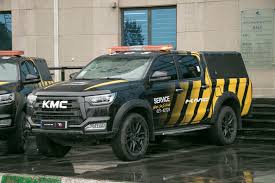When it comes to purchasing tanks or large storage containers, whether for water, fuel, or industrial purposes, understanding the harga tangki (tank prices) is essential for making an informed decision. Tanks are critical infrastructure in many sectors, including agriculture, construction, and manufacturing, providing a safe and efficient means of storing liquids and gases. In Indonesia, the cost of tanks can vary significantly depending on several harga tangki fiberglass, from the material and size to the type of tank and its intended use. In this article, we will explore the different types of tanks available in Indonesia, factors affecting their prices, and tips for choosing the right one for your needs.
What is a Tangki?
A tangki (tank) is a large container designed to hold liquids or gases. It can be made from various materials such as steel, plastic, fiberglass, or concrete, depending on the intended use and the properties of the substances being stored. In Indonesia, tanks are commonly used for storing water, oil, chemicals, and even natural gas. They come in a wide range of sizes, from small residential tanks to large industrial-scale storage units.
Types of Tanks and Their Prices
The price of a tank in Indonesia depends largely on the type and material used to manufacture it. Below are the common types of tanks and an overview of their price ranges:
- Water Tanks (Tangki Air)
Water tanks are among the most commonly used tanks in residential, commercial, and industrial settings. These tanks are designed to store potable or non-potable water and are made from materials like polyethylene, fiberglass, or stainless steel.
- Plastic Water Tanks: These are the most affordable and widely used. Prices typically range from IDR 1,000,000 to IDR 5,000,000 for sizes ranging from 500 liters to 5000 liters.
- Stainless Steel Water Tanks: Known for durability and resistance to corrosion, these tanks are more expensive. Prices for stainless steel tanks range from IDR 5,000,000 to IDR 20,000,000 depending on size and quality.
- Fuel Tanks (Tangki Bahan Bakar)
Fuel tanks are specially designed to store petroleum products, such as gasoline, diesel, or LPG (liquefied petroleum gas). These tanks are built to prevent leaks and withstand high pressure, making them more expensive.
- Steel Fuel Tanks: These tanks are highly durable and corrosion-resistant. Their prices range from IDR 10,000,000 to IDR 50,000,000 depending on the capacity and safety features.
- Above-Ground and Underground Fuel Tanks: Depending on the intended installation (above-ground or underground), prices can vary significantly, with underground tanks typically costing more due to installation complexities.
- Chemical Tanks (Tangki Kimia)
Chemical tanks are used to store a wide range of chemicals for industrial purposes. These tanks must be constructed from materials that can withstand the corrosive nature of certain chemicals. Common materials include fiberglass and special steel alloys.
- Fiberglass Chemical Tanks: These are resistant to corrosion and are commonly used for acidic or basic solutions. Prices for fiberglass tanks range from IDR 5,000,000 to IDR 30,000,000 depending on capacity and chemical compatibility.
- Stainless Steel Chemical Tanks: Used for more hazardous substances, these tanks are pricier, ranging from IDR 20,000,000 to IDR 80,000,000.
- Wastewater Tanks (Tangki Limbah)
Wastewater tanks are designed to collect and store waste liquids from industrial processes, households, or commercial establishments. These tanks are built to resist chemical corrosion and odor.
- Polyethylene Wastewater Tanks: These are affordable and commonly used in household and small-scale commercial applications. Prices range from IDR 2,000,000 to IDR 10,000,000.
- Steel Wastewater Tanks: These are used for more robust industrial applications, with prices ranging from IDR 10,000,000 to IDR 40,000,000 depending on the size and specifications.
Factors Affecting Harga Tangki
Several factors influence the pricing of tanks in Indonesia. Some of the most important factors include:
- Material
The material used to make the tank significantly affects its price. Tanks made from materials like fiberglass or stainless steel tend to be more expensive due to their durability, resistance to corrosion, and ability to store hazardous substances safely. - Size and Capacity
Larger tanks typically cost more than smaller ones. The price increases with the tank’s volume, so it’s important to choose the right size based on your needs. For example, a tank designed for a residential home may be much cheaper than one intended for industrial or agricultural use. - Type of Tank
The type of tank you choose (water, fuel, chemical, or wastewater) will also impact the price. Specialty tanks designed for particular applications tend to be more expensive due to the engineering and safety requirements involved. - Installation and Maintenance
Some tanks, such as underground tanks or large industrial tanks, require additional costs for installation, such as excavation, piping, and labor. Maintenance costs should also be considered when evaluating the overall price of a tank. - Brand and Quality
Well-known brands and high-quality tanks often come with a premium price tag. Investing in a reputable brand ensures better durability, performance, and customer service, which may reduce long-term costs related to maintenance and replacements.
Tips for Choosing the Right Tangki
- Determine Your Storage Needs
The first step in selecting a tank is understanding how much liquid or gas you need to store. This will help you narrow down your choices and select the appropriate size. - Consider the Material
Choose a tank material that best suits the liquid you’re storing. For example, plastic tanks are ideal for water storage, while stainless steel or fiberglass may be better for chemicals or fuel. - Check for Certifications
Ensure that the tank meets local regulations and industry standards, especially if you’re storing hazardous materials. Look for certifications or approvals that guarantee the tank’s safety and quality. - Compare Prices and Features
Research and compare prices from different suppliers to ensure you’re getting the best value. Consider the tank’s features, such as corrosion resistance, ease of installation, and warranty, when making your decision.
Conclusion
The harga tangki in Indonesia can vary greatly depending on the type, material, and intended use of the tank. Whether you’re looking to store water, fuel, chemicals, or wastewater, understanding the factors that influence tank prices will help you make an informed choice. By considering factors such as size, material, and installation requirements, you can select the right tank that meets your needs and fits your budget. Always ensure you are purchasing from reputable suppliers to guarantee the quality and safety of your tank.



